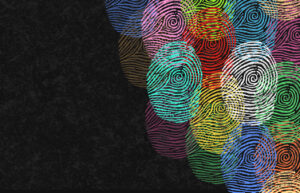Combatting DE&I fatigue
Exploring the roots of this fatigue — and how to keep your focus on your goals.

It’s no secret that a diverse workplace is beneficial to both your business and culture. Diversity ensures our strategies incorporate a wider range of perspectives that reflect the lived experiences of all stakeholders and audiences, making our organizations better places to work in general.
But with these important commitments come some important questions. How can you combat fatigue around DE&I (diversity, equity, and inclusion) initiatives? How can well-intentioned communicators operationalize their organization’s commitment to a more diverse and inclusive workplace while keeping their employees engaged?
We spoke to people who are doing the work to learn about their perspectives on the issue and figure out the challenges they’re facing right now.
The root of fatigue
The personal investment in DE&I work is beneficial in many ways, but it can also bring a certain cost to it for those who carry out the tasks.
Alice Jackson-Jolley, assistant managing editor at Forbes, said that the personal part of the work can also carry some weight for its practitioners.
“In addition to professional success or setback, there is also a very personal cost or reward associated with the success of DE&I work,” said Jackson-Jolley “This makes setting psychological boundaries and maintaining a work-life balance a bit more complicated than other roles.”
She added that creating change isn’t an overnight process and sustained efforts are a big part of why DE&I efforts work long-term.
“Real, lasting, systemic change is not a linear process,” continued Jackson-Jolley. “Nor is it swift. It’s slow, intentional work that often looks like progress and regress, setbacks and success. It requires sustained efforts to grow the initiatives in which we are seeing success and make adjustments to the initiatives where we are not.”
Raising voices
When we talk about DE&I initiatives, we also need to consider the people in our organizations who are working tirelessly to make them happen. These personal stakes are an integral part of how DE&I functions and is championed.
Janice Torres, publicist and founder of The Brand Phoenix, said that she feels deeply attached to the DE&I missions she champions, which informs how she works to combat fatigue in DE&I initiatives.
“I’ve got a responsibility to amplify voices,” Torres said. “As someone who is both a DE&I practitioner and a communications pro, I’ve learned to approach these issues from a holistic point of view.”
DE&I fatigue doesn’t just come from nowhere —- there are signs that watchful pros need to keep an eye out for. Torres said that some of the tell-tale signs can be somewhat clear but need to be acted upon when seen.
“There are usually clear-cut signs of fatigue — not speaking up at meetings, doing the bare minimum, and more,” Torres said. “At times like that, it’s even more incumbent on us as communicators to create a culture in which people feel comfortable sharing their ideas and thoughts.”
Recognizing fatigue while pushing forward
We know that DE&I initiatives are important and that fatigue around them is real. So what comes next?
According to Jackson-Jolley, the key is having a support system in place.
“It takes a village,” she said. “With DEI change (as with any major undertaking), the best way to lighten the load is to share responsibility.”
Jackson-Jolley also shared an anecdote about her organization emphasizing the importance of the buy-in of leadership.
“One reason that I have a true sense of optimism – a belief that the Forbes Newsroom will look like America and society at large in the near future — is that newsroom change is a shared value throughout the entire Forbes organization. While I oversee newsroom change for Forbes, the Forbes staff, including executive leaders, are invested in that change.”
Torres added that it’s key for DE&I teams to have access to proper resources and avenues of communication to keep engagement high and fatigue low.
“The rhythm and manner of headline-dominating cultural shock responses –– economic downturns, climate disasters, and racial inequities –– that impact the workforce, communities served, and the overall public psyche, must match the resources available to the DE&I team,” she said.
Keeping the momentum
One of the most critical parts of keeping employees engaged on DE&I initiatives is keeping the ball rolling with real, genuine efforts. According to Jackson-Jolley, superficial work isn’t going to cut it; this work is larger than one person or department alone.
“Sustainable DEI efforts are horizontally and vertically integrated throughout the company and strategically interwoven throughout every aspect of the business,” she said. “Ask yourself, if the individual who oversees DEI for my company were to leave, would DEI progress leave with them?”
Sean Devlin is an editor at Ragan Communications. In his spare time he enjoys Philly sports, a good pint and ’90s trivia night.






